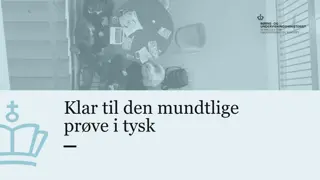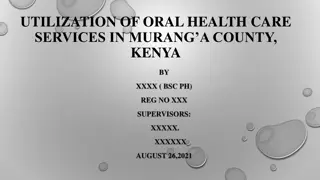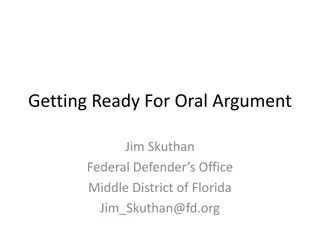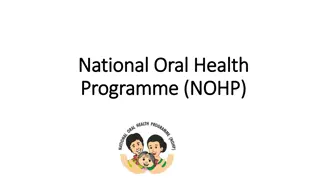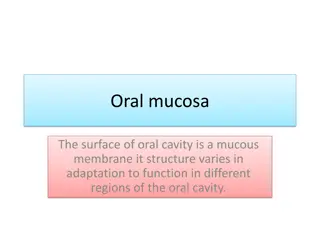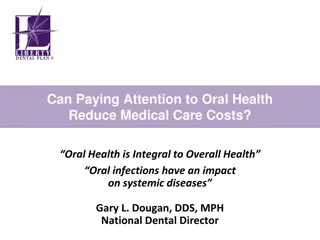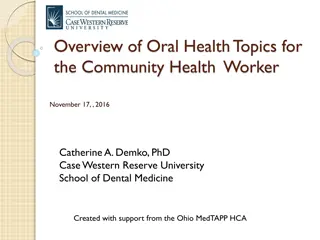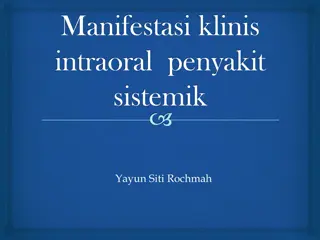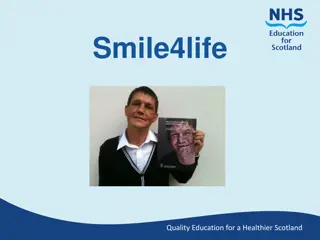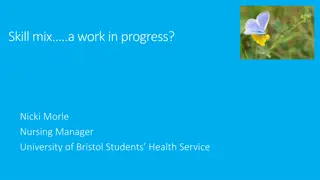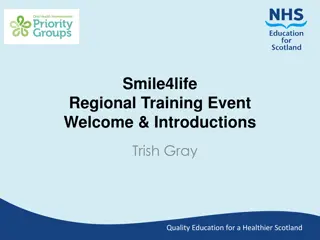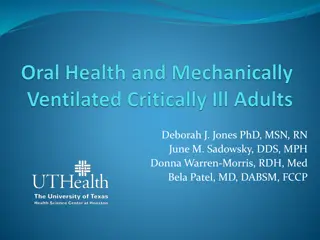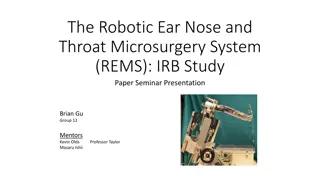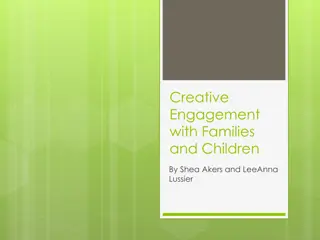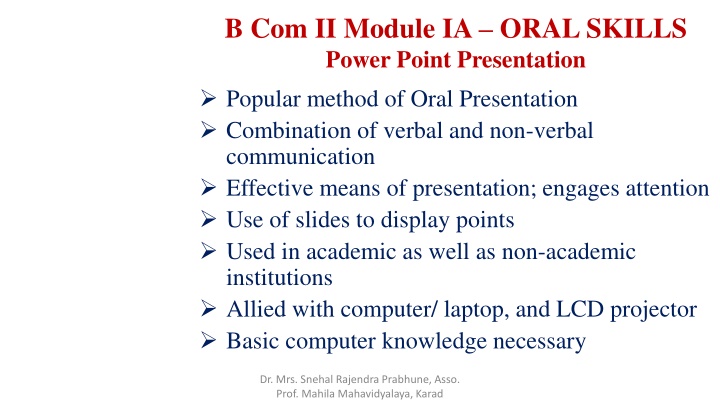
Effective Oral Presentation Skills Using Power Point Slides
Enhance your oral presentation skills with Power Point slides for engaging and effective communication. Learn how to create and deliver impactful presentations using a combination of verbal and non-verbal communication techniques. Discover the benefits of using slides in academic and non-academic settings, along with tips on preparation, design, and delivery. Suitable for teaching, corporate presentations, seminars, and conferences.
Download Presentation

Please find below an Image/Link to download the presentation.
The content on the website is provided AS IS for your information and personal use only. It may not be sold, licensed, or shared on other websites without obtaining consent from the author. If you encounter any issues during the download, it is possible that the publisher has removed the file from their server.
You are allowed to download the files provided on this website for personal or commercial use, subject to the condition that they are used lawfully. All files are the property of their respective owners.
The content on the website is provided AS IS for your information and personal use only. It may not be sold, licensed, or shared on other websites without obtaining consent from the author.
E N D
Presentation Transcript
B Com II Module IA ORAL SKILLS Power Point Presentation Popular method of Oral Presentation Combination of verbal and non-verbal communication Effective means of presentation; engages attention Use of slides to display points Used in academic as well as non-academic institutions Allied with computer/ laptop, and LCD projector Basic computer knowledge necessary Dr. Mrs. Snehal Rajendra Prabhune, Asso. Prof. Mahila Mahavidyalaya, Karad
Power Point Presentation: Uses In teaching- learning In companies/ corporate firms, Government offices: introduction of new scheme, project, product, expansion, problem solving Seminars, Conferences Features of Power Point Images, audios, videos can be added Animation, graphics and effects can be used Use of bullets, tables, charts (flow, pie), diagrams, graphs, maps, bar diagrams, tree diagrams etc. Dr. Mrs. Snehal Rajendra Prabhune, Asso. Prof. Mahila Mahavidyalaya, Karad
Procedure 1. Prepare Power Point Presentation 2. Present the information orally with the help of slides Preparation of Power Point Presentation Use MS Power Point software on PC/ laptop or Google Slides or similar app. on android phone Select format of slide Orientation of slide, size of slide Font and font size Dr. Mrs. Snehal Rajendra Prabhune, Asso. Prof. Mahila Mahavidyalaya, Karad
1. Preparation of Power Point Presentation continued Select Design for slide, colour if required Prepare Intro-slide Display contents in slides giving proper titles, subtitles Use points and not sentences Keep consistency in the slides Use bullets, diagrams and other tools as required Keep slides simple, avoid over crowding of information Prepare Extro-slide Dr. Mrs. Snehal Rajendra Prabhune, Asso. Prof. Mahila Mahavidyalaya, Karad
2. Oral Presentation with Power Point Follow all conversational etiquettes Begin with appropriate greetings Introduce the topic Elaborate with the help of points in the slides Use simple sentence structure Use of Present tense generally; Past and Future only when required Use common vocabulary; technical language only if audience includes experts Dr. Mrs. Snehal Rajendra Prabhune, Asso. Prof. Mahila Mahavidyalaya, Karad
Oral Presentation with Power Point continued Make a proper end to the presentation Nature of question in Exam: 1. Make a Power Point Presentation on -------. 2. Create 2-3 slides on -------- and explain each point in at least 3-4 sentences. Solved example: Create 2-3 slides on Pollution and explain each slide in at least 3-4 sentences. Dr. Mrs. Snehal Rajendra Prabhune, Asso. Prof. Mahila Mahavidyalaya, Karad
Solved example continued Pollution Slide 1. Definition: the natural environment that cause adverse change Pollution is the introduction of contaminants into -Merriam-Webster Online Dictionary Pollution : Types Air: damage to air quality due to harmful/ poisonous substances Water: damage to water quality due to effluents, from factories, sewage etc. Noise: propagation of noise with adverse effects on human and animal life resulting from machines, vehicles etc. Slide 2. Dr. Mrs. Snehal Rajendra Prabhune, Asso. Prof. Mahila Mahavidyalaya, Karad
Solved example continued Pollution: Effects Slide 3 Air Pollution: 1. diseases of the respiratory system- asthma, cough, tuberculosis 2. Global warming Water Pollution: diseases like, diarrhoea, cholera, hepatitis, typhoid etc. Noise Pollution: deafness, hypertension Explanation: Hello and welcome to everybody! Today, I shall make a small presentation on Pollution. We hear the mention of pollution as a great problem, a threat to life on Earth. Let us try to understand it. Dr. Mrs. Snehal Rajendra Prabhune, Asso. Prof. Mahila Mahavidyalaya, Karad
Solved example continued Here, in this first slide , we find the definition of Pollution. It is clear from the definition that when air, water and natural resources become harmful, by natural or man-made things, it is pollution. The things that pollute these resources are called pollutants. Now, let us see the major types of pollution. They are Air pollution, Water Pollution and Noise or Sound Pollution. As we all know air is polluted by a many gases like carbon monoxide (CO), carbon dioxide (CO2), smoke, dust etc. These are emitted into the air by vehicles,, chimneys of factories and even through respiration. These are harmful to life when they exceed the limit. Water is polluted by disposal of effluents from factories, disposal of sewage into water bodies without treating it, washing and defecating in water bodies. Loud sound that is beyond the capacity of ears to bear results in sound or noise pollution. Horns of vehicles, machines, sirens etc. result in sound pollution Dr. Mrs. Snehal Rajendra Prabhune, Asso. Prof. Mahila Mahavidyalaya, Karad
Solved example continued This final slide explains the adverse effects of pollution. Usually, Air pollution leads to disorders of the respiratory system. People suffer from asthma, suffocation, breathlessness, Tuberculosis and many such disorders. Water pollution results in disorders of the digestive system. Contaminated water and food lead to cholera, Diarrhoea, typhoid, hepatitis etc. these can become quite fatal. Sometimes lead and arsenic content in water also becomes hazardous to health. Too big a sound especially above 50 decibels can lead to deafness and hypertension. Sometime certain accidents like leakage of radioactive substances affects future generations of the victims also. From the presentation we have learnt the concept of pollution, its types, causes and effects. It then becomes our sacred duty to protect our environment through various measures. Thank you. Dr. Mrs. Snehal Rajendra Prabhune, Asso. Prof. Mahila Mahavidyalaya, Karad


